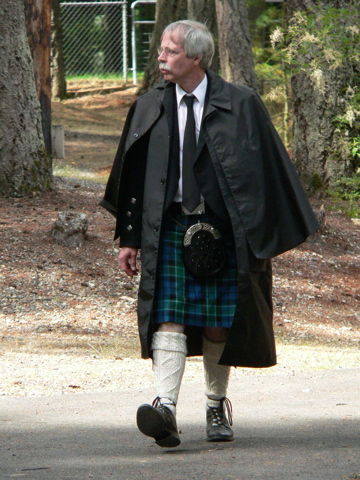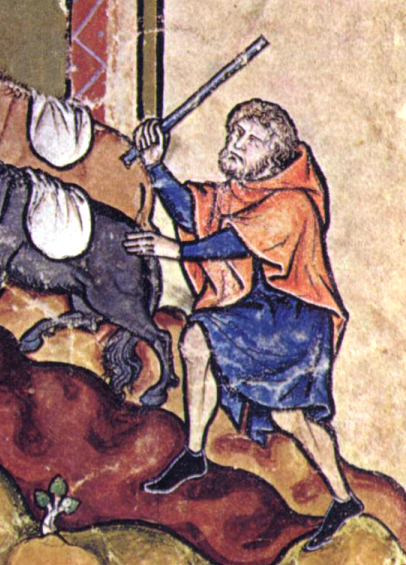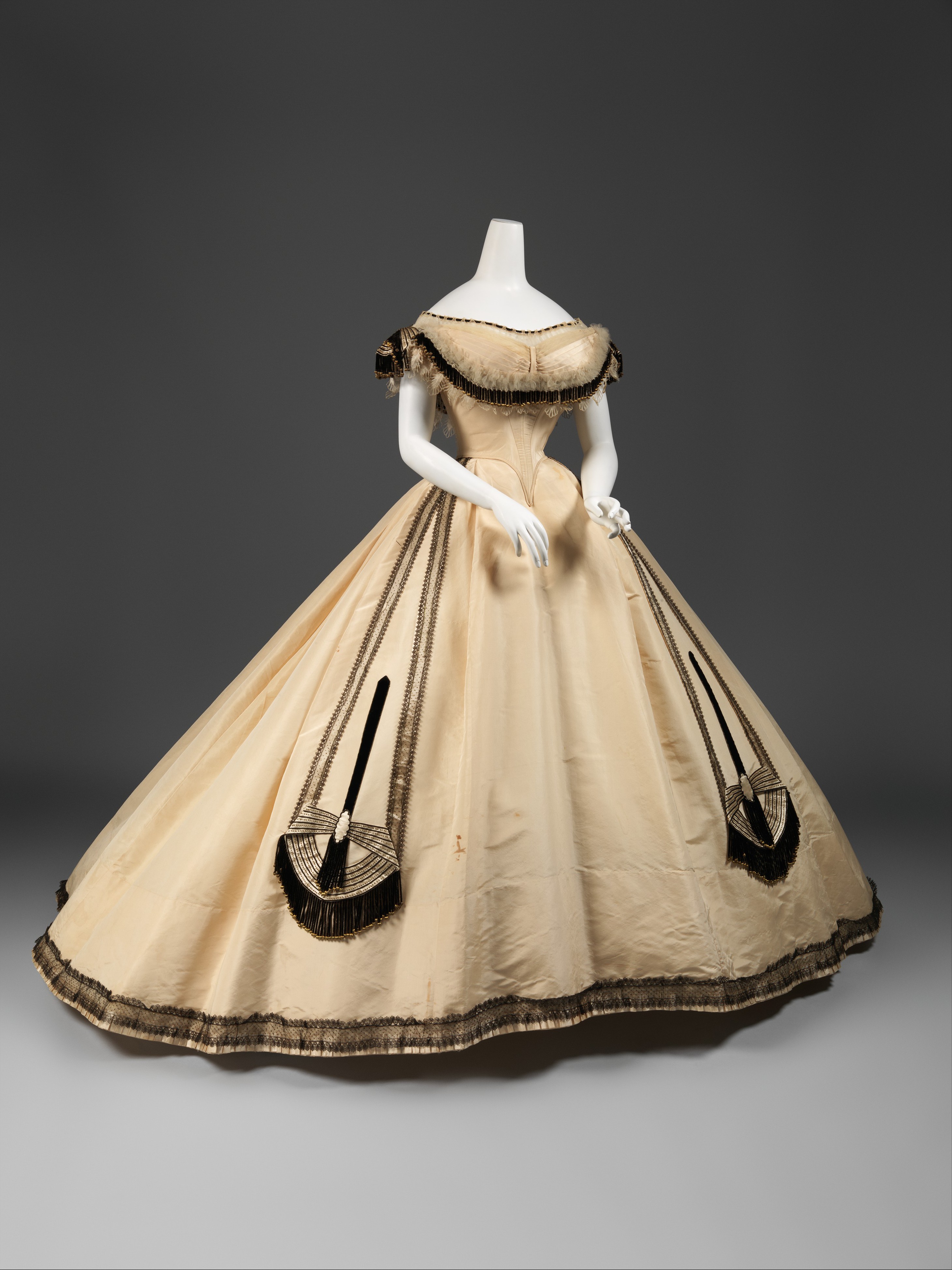|
Cape
A cape is a clothing accessory or a sleeveless outer garment which drapes the wearer's back, arms, and chest, and connects at the neck. History Capes were common in medieval Europe, especially when combined with a hood in the chaperon. They have had periodic returns to fashion - for example, in nineteenth-century Europe. Roman Catholic clergy wear a type of cape known as a ferraiolo, which is worn for formal events outside a ritualistic context. The cope is a liturgical vestment in the form of a cape. Capes are often highly decorated with elaborate embroidery. Capes remain in regular use as rainwear in various military units and police forces, in France for example. A gas cape was a voluminous military garment designed to give rain protection to someone wearing the bulky gas masks used in twentieth-century wars. Rich noblemen and elite warriors of the Aztec Empire would wear a tilmàtli; a Mesoamerican cloak/cape used as a symbol of their upper status. Cloth and c ... [...More Info...] [...Related Items...] OR: [Wikipedia] [Google] [Baidu] |
Inverness Cape
The Inverness cape is a form of weatherproof outer-coat. It is notable for being sleeveless, the arms emerging from armholes beneath a cape. It has become associated with the fictional detective Sherlock Holmes. History The garment began in the 1850s as the Inverness coat, an outer coat with sleeves covered by a long cape, reaching the length of the sleeve. By the 1870s, the cape was divided in two, and a small "capelet"-like "wing" on each side was sewn into the side seams, not taken across the back. In the 1880s, the sleeves were removed entirely, and the armholes were cut away beneath the cape to form the Inverness ''cape.'' The fronts of the coat may be finished in either of two styles: in one, the more formal, the topcoat is finished with short lapels and the capes are set back behind them. In another style, there are no lapels. A simple fall collar with a tall stand is used, the capes buttoning across. These were also favored for less formal wear, particularly by coachme ... [...More Info...] [...Related Items...] OR: [Wikipedia] [Google] [Baidu] |
Cope
The cope (known in Latin as ''pluviale'' 'rain coat' or ''cappa'' 'cape') is a liturgical vestment, more precisely a long mantle or cloak, open in front and fastened at the breast with a band or clasp. It may be of any liturgical colours, liturgical colour. A cope may be worn by any rank of the clergy. If worn by a bishop, it is generally accompanied by a mitre. The buckle, clasp, which is often highly ornamented, is called a ''morse''. In art, angels are often shown wearing copes, especially in Early Netherlandish painting. History There has been little change in the character of the vestment from the earliest ages. Then as now it was made of a piece of silk or other cloth of semicircular shape, which distinguished it from the earlier form of chasuble, as a chasuble had straight edges sewn together in front. Both are similar in form and origin to the Orthodox phelonion. The only noticeable modification which the cope has undergone lies in the disappearance of the hood. So ... [...More Info...] [...Related Items...] OR: [Wikipedia] [Google] [Baidu] |
Chaperon (headgear)
A chaperon ( or ; Middle French: ''chaperon'') was a form of hood or, later, highly versatile hat worn in all parts of Western Europe in the Middle Ages. Initially a utilitarian garment, it first grew a long partly decorative tail behind called a liripipe, and then developed into a complex, versatile and expensive headgear after what was originally the vertical opening for the face began to be used as a horizontal opening for the head. It was especially fashionable in mid-15th century Burgundy, before gradually falling out of fashion in the late 15th century and returning to its utilitarian status. It is the most commonly worn male headgear in Early Netherlandish painting, but its complicated construction is often misunderstood. Humble origins The chaperon began before 1200 as a hood with a short cape, put on by pulling over the head, or fastening at the front. The hood could be pulled off the head to hang behind, leaving the short cape round the neck and shoulders. The e ... [...More Info...] [...Related Items...] OR: [Wikipedia] [Google] [Baidu] |
Hood (headgear)
A hood is a kind of headgear that covers most of the head and neck, and sometimes the face. Hoods that cover mainly the sides and top of the head, and leave the face mostly or partly open may be worn for protection from the environment (typically cold weather or rain), for fashion, as a form of traditional dress or uniform, or in the case of knights, an armoured hood is used for protection against bladed weapons. In some cases, hoods are used to prevent the wearer from seeing where they are going (e.g., in cases where a prisoner is hooded). Hoods with eye holes may be used for religious purposes to prevent the wearer from being seen. In the case of Ku Klux Klan members, terrorists, or criminals such as robbers, a hood with eye holes helps prevent identification. Etymology The word traces back to Old English ''hod'' "hood," from Proto-Germanic *''hodaz'' (cf. Old Saxon, Old Frisian ''hod'' "hood," Middle Dutch ''hoet'', Dutch ''hoed'' "hat," Old High German ''huot'' "helmet, ha ... [...More Info...] [...Related Items...] OR: [Wikipedia] [Google] [Baidu] |
Police
The police are a constituted body of persons empowered by a state, with the aim to enforce the law, to ensure the safety, health and possessions of citizens, and to prevent crime and civil disorder. Their lawful powers include arrest and the use of force legitimized by the state via the monopoly on violence. The term is most commonly associated with the police forces of a sovereign state that are authorized to exercise the police power of that state within a defined legal or territorial area of responsibility. Police forces are often defined as being separate from the military and other organizations involved in the defense of the state against foreign aggressors; however, gendarmerie are military units charged with civil policing. Police forces are usually public sector services, funded through taxes. Law enforcement is only part of policing activity. Policing has included an array of activities in different situations, but the predominant ones are concerned with t ... [...More Info...] [...Related Items...] OR: [Wikipedia] [Google] [Baidu] |
Cloak
A cloak is a type of loose garment worn over clothing, mostly but not always as outerwear for outdoor wear, serving the same purpose as an overcoat, protecting the wearer from the weather. It may form part of a uniform. Cloaks have been and are worn in countless societies. Over time cloak designs have been changed to match fashion and available textiles. Cloaks generally fasten at the neck or over the shoulder, vary in length, from hip all the way down to the ankle, mid-calf being the normal length. They may have an attached hood and may cover and fasten down the front, in which case they have holes or slits for the hands to pass through. However, cloaks are almost always sleeveless. Etymology The word ''cloak'' comes from Old North French ''cloque'' ( Old French ''cloche'', ''cloke'') meaning "travelling cloak", from Medieval Latin ''clocca'' "travelers' cape," literally "a bell," so called from the garment's bell-like shape. Thus the word is related to the word ''clock ... [...More Info...] [...Related Items...] OR: [Wikipedia] [Google] [Baidu] |
Vestment
Vestments are liturgical garments and articles associated primarily with the Christian religion, especially by Eastern Churches, Catholics (of all rites), Anglicans, and Lutherans. Many other groups also make use of liturgical garments; this was a point of controversy in the Protestant Reformation and sometimes since, in particular during the ritualist controversies in England in the 19th century. Origins of vestments In the early Christian churches, officers and leaders, like their congregations, wore the normal dress of civil life in the Greco-Roman world, although with an expectation that the clothing should be clean and pure during holy observances. From the 4th century onward, however, modifications began to be made to the form of the garments, and as secular fashions changed from the 6th century the church retained the original forms of their garments, although with separate development and with regional variations. Having separate, consecrated clothing for the ceremo ... [...More Info...] [...Related Items...] OR: [Wikipedia] [Google] [Baidu] |
Coat (clothing)
A coat typically is an outer garment for the upper body as worn by either gender for warmth or fashion. Coats typically have long sleeves and are open down the front and closing by means of buttons, zippers, hook-and-loop fasteners, toggles, a belt, or a combination of some of these. Other possible features include collars, shoulder straps and hoods. Etymology ''Coat'' is one of the earliest clothing category words in English, attested as far back as the early Middle Ages. (''See also'' Clothing terminology.) The Oxford English Dictionary traces ''coat'' in its modern meaning to c. 1300, when it was written ''cote'' or ''cotte''. The word coat stems from Old French and then Latin ''cottus.'' It originates from the Proto-Indo-European word for woolen clothes. An early use of ''coat'' in English is coat of mail (chainmail), a tunic-like garment of metal rings, usually knee- or mid-calf length. History The origins of the Western-style coat can be traced to the sl ... [...More Info...] [...Related Items...] OR: [Wikipedia] [Google] [Baidu] |
Ballgown
A ball gown, ballgown or gown is a type of evening gown worn to a ball or a formal event. Most versions are cut off the shoulder with a low décolletage, exposed arms, and long bouffant styled skirts. Such gowns are typically worn with an opera-length white gloves and vintage jewelry or couture, stole (a formal shawl in expensive fabric), cape or cloak in lieu of a coat. Where " state decorations" are to be worn, they are on a bow pinned to the chest, and married women wear a tiara if they have one. Although synthetic fabrics are now sometimes used, the most common fabrics are satin, silk, taffeta and velvet with trimmings of lace, pearls, sequins, embroidery, ruffles, ribbons, rosettes and ruching. History 1850s In previous years, the same type of dress might have been called an evening dress, having very similar features; low-cut neckline, a tight bodice, a large skirt and (sometimes) bare arms. The ball gown at this time had similar features, a full skirt suppo ... [...More Info...] [...Related Items...] OR: [Wikipedia] [Google] [Baidu] |
Textile
Textile is an umbrella term that includes various fiber-based materials, including fibers, yarns, filaments, threads, different fabric types, etc. At first, the word "textiles" only referred to woven fabrics. However, weaving is not the only manufacturing method, and many other methods were later developed to form textile structures based on their intended use. Knitting and non-woven are other popular types of fabric manufacturing. In the contemporary world, textiles satisfy the material needs for versatile applications, from simple daily clothing to bulletproof jackets, spacesuits, and doctor's gowns. Textiles are divided into two groups: Domestic purposes onsumer textilesand technical textiles. In consumer textiles, aesthetics and comfort are the most important factors, but in technical textiles, functional properties are the priority. Geotextiles, industrial textiles, medical textiles, and many other areas are examples of technical textiles, whereas clot ... [...More Info...] [...Related Items...] OR: [Wikipedia] [Google] [Baidu] |
Mesoamerican
Mesoamerica is a historical region and cultural area in southern North America and most of Central America. It extends from approximately central Mexico through Belize, Guatemala, El Salvador, Honduras, Nicaragua, and northern Costa Rica. Within this region Pre-Columbian era, pre-Columbian societies flourished for more than 3,000 years before the Spanish colonization of the Americas. Mesoamerica was the site of two of the most profound historical transformations in world history: primary urban generation, and the formation of New World cultures out of the long encounters among indigenous, European, African and Asian cultures. In the 16th century, Eurasian diseases such as smallpox and measles, which were endemic among the colonists but new to North America, caused the deaths of upwards of 90% of the indigenous people, resulting in great losses to their societies and cultures. Mesoamerica is one of the five areas in the world where ancient civilization arose independently (see cr ... [...More Info...] [...Related Items...] OR: [Wikipedia] [Google] [Baidu] |
Tilmàtli
A ''tilmàtli'' (or ''tilma''; nci, tilmahtli, ) was a type of outer garment worn by men as a cloak/cape, documented from the late Postclassic and early Colonial eras among the Aztec and other peoples of central Mexico. Styling The garment was to be worn at the front like a long apron, or alternatively draped across the shoulders as a cloak. It was also frequently used as a carry-all. Significance Several different types of the garment were in use, designed for the various classes in society. Upper classes wore a tilmàtli of cotton cloth knotted over the right shoulder, while the middle class used a tilmàtli made of ayate fibre, a coarse fabric derived from the threads of the maguey agave. It was knotted over the left shoulder. The lower classes knotted the garment behind the neck, where it could serve for carrying. Miraculous image A very famous tilmàtli was that worn by Juan Diego in 1531; according to tradition, an image of the Virgin Mary appeared on it in the p ... [...More Info...] [...Related Items...] OR: [Wikipedia] [Google] [Baidu] |



.jpg)






